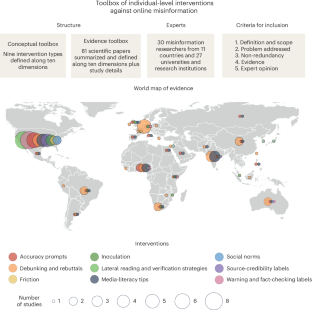2025-02-05 マックス・プランク研究所 (MPG)
<関連情報>
- https://www.mpg.de/24132917/0205-bild-online-misinformation-149835-x1?c=2249
- https://www.pnas.org/doi/10.1073/pnas.2409329121
- https://www.nature.com/articles/s41562-024-01881-0
ネット上の誤報に対する感受性:人口統計学的要因と心理学的要因の系統的メタ分析 Susceptibility to online misinformation: A systematic meta-analysis of demographic and psychological factors
Mubashir Sultan, Alan N. Tump, Nina Ehmann, +3, and Ralf H. J. M. Kurvers
Proceedings of the National Academy of Sciences Published:November 12, 2024
DOI:https://doi.org/10.1073/pnas.2409329121

Significance
It remains unclear who is susceptible to misinformation. We synthesized 31 studies to uncover how key demographic and psychological factors impact misinformation susceptibility. We distinguished between the ability to differentiate true from false news (discrimination ability) and response bias: the tendency to label news as either true (true-news bias) or false (false-news bias). We found that older adults, Democrats (compared to Republicans), and those with higher analytical thinking skills show greater discrimination ability. Ideological congruency (alignment of participants’ ideology with news), motivated reflection (higher analytical thinking skills being associated with a greater congruency effect), and self-reported familiarity with news were linked with a true-news bias. Our results provide insights for better theory building and for designing targeted interventions.
Abstract
Nearly five billion people use and receive news through social media and there is widespread concern about the negative consequences of misinformation on social media (e.g., election interference, vaccine hesitancy). Despite a burgeoning body of research on misinformation, it remains largely unclear who is susceptible to misinformation and why. To address this, we conducted a systematic individual participant data meta-analysis covering 256,337 unique choices made by 11,561 US-based participants across 31 experiments. Our meta-analysis reveals the impact of key demographic and psychological factors on online misinformation veracity judgments. We also disentangle the ability to discern between true and false news (discrimination ability) from response bias, that is, the tendency to label news as either true (true-news bias) or false (false-news bias). Across all studies, participants were well above-chance accurate for both true (68.51%) and false (67.24%) news headlines. We find that older age, higher analytical thinking skills, and identifying as a Democrat are associated with higher discrimination ability. Additionally, older age and higher analytical thinking skills are associated with a false-news bias (caution). In contrast, ideological congruency (alignment of participants’ ideology with news), motivated reflection (higher analytical thinking skills being associated with a greater congruency effect), and self-reported familiarity with news are associated with a true-news bias (naïvety). We also find that experiments on MTurk show higher discrimination ability than those on Lucid. Displaying sources alongside news headlines is associated with improved discrimination ability, with Republicans benefiting more from source display. Our results provide critical insights that can help inform the design of targeted interventions.
オンライン誤情報に対する個人レベルの介入策のツールボックス Toolbox of individual-level interventions against online misinformation
Anastasia Kozyreva,Philipp Lorenz-Spreen,Stefan M. Herzog,Ullrich K. H. Ecker,Stephan Lewandowsky,Ralph Hertwig,Ayesha Ali,Joe Bak-Coleman,Sarit Barzilai,Melisa Basol,Adam J. Berinsky,Cornelia Betsch,John Cook,Lisa K. Fazio,Michael Geers,Andrew M. Guess,Haifeng Huang,Horacio Larreguy,Rakoen Maertens,Folco Panizza,Gordon Pennycook,David G. Rand,Steve Rathje,Jason Reifler,… Sam Wineburg
Nature Human Behaviour Published:13 May 2024
DOI:https://doi.org/10.1038/s41562-024-01881-0

Abstract
The spread of misinformation through media and social networks threatens many aspects of society, including public health and the state of democracies. One approach to mitigating the effect of misinformation focuses on individual-level interventions, equipping policymakers and the public with essential tools to curb the spread and influence of falsehoods. Here we introduce a toolbox of individual-level interventions for reducing harm from online misinformation. Comprising an up-to-date account of interventions featured in 81 scientific papers from across the globe, the toolbox provides both a conceptual overview of nine main types of interventions, including their target, scope and examples, and a summary of the empirical evidence supporting the interventions, including the methods and experimental paradigms used to test them. The nine types of interventions covered are accuracy prompts, debunking and rebuttals, friction, inoculation, lateral reading and verification strategies, media-literacy tips, social norms, source-credibility labels, and warning and fact-checking labels.



